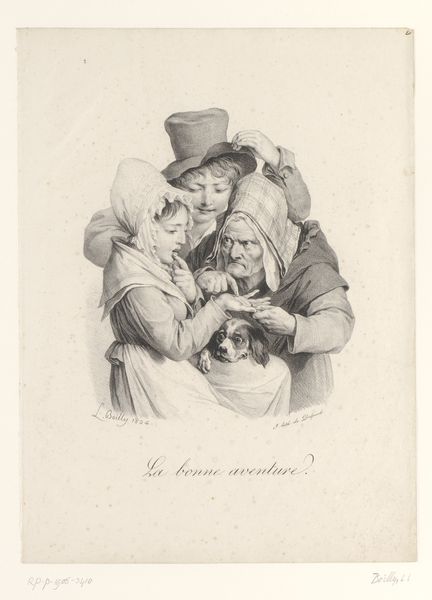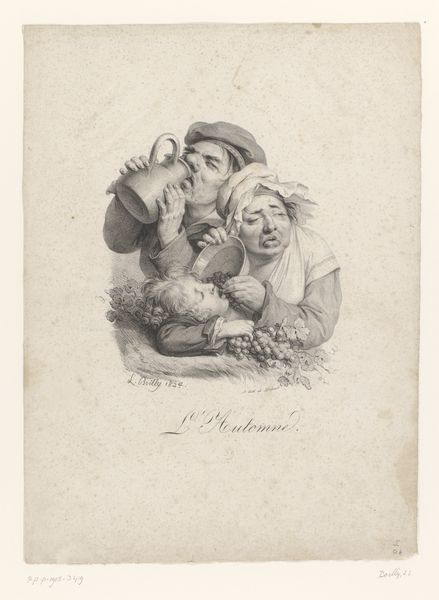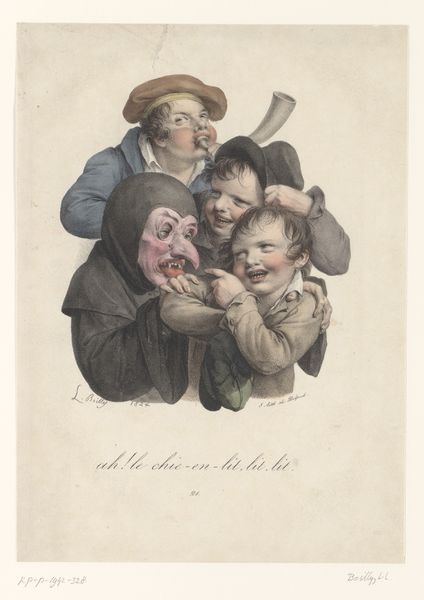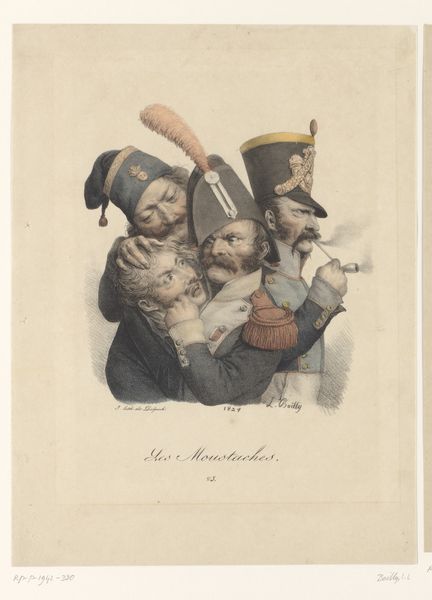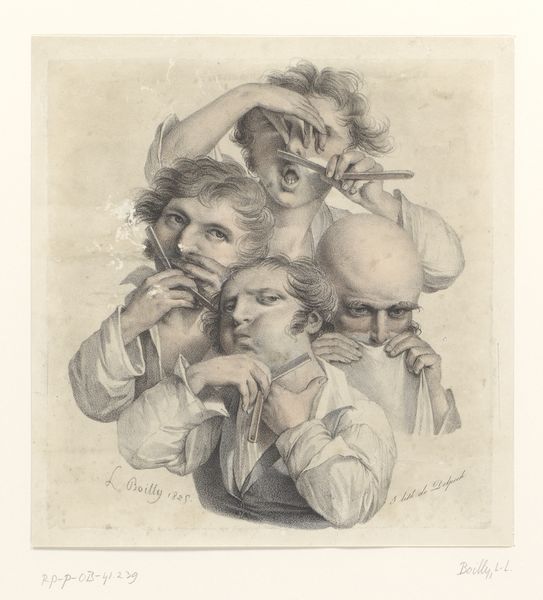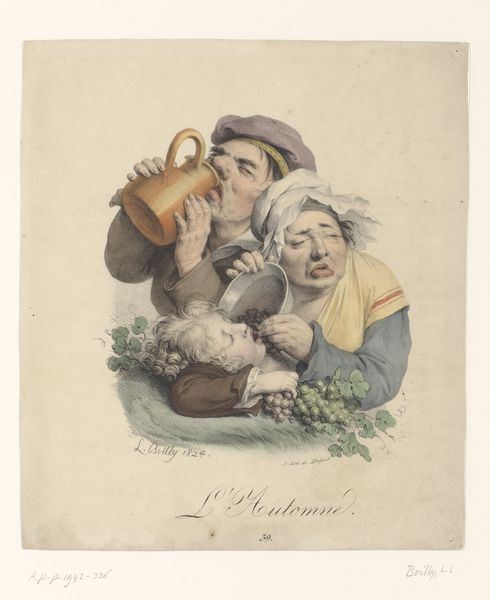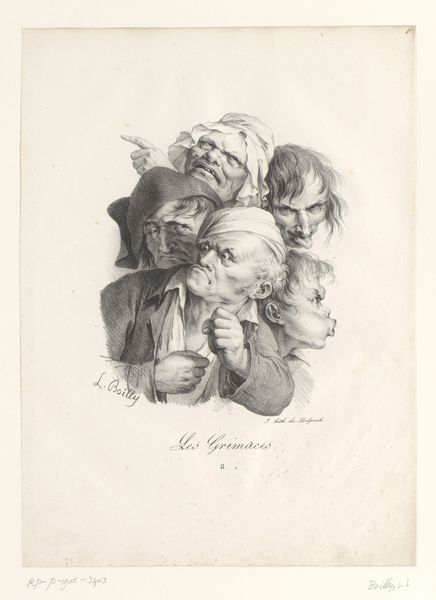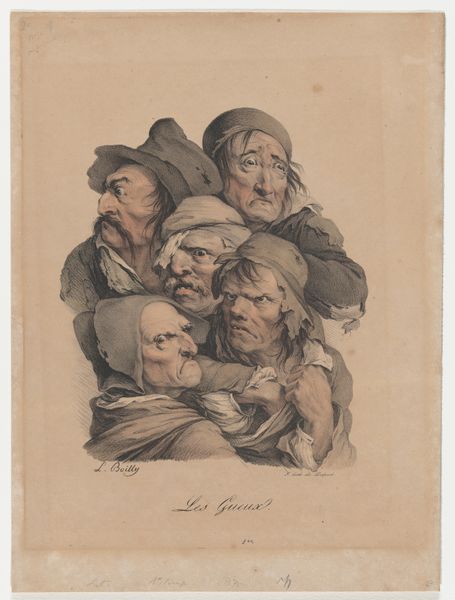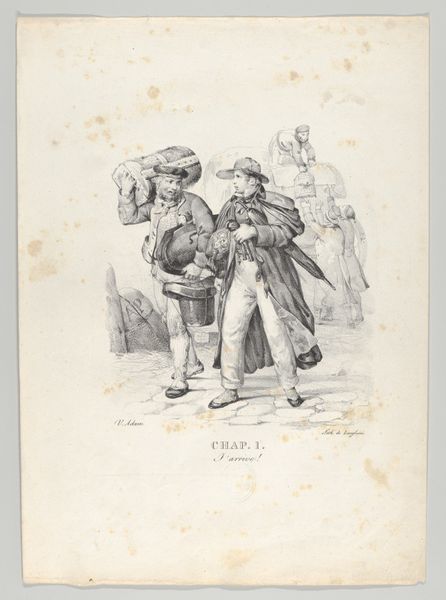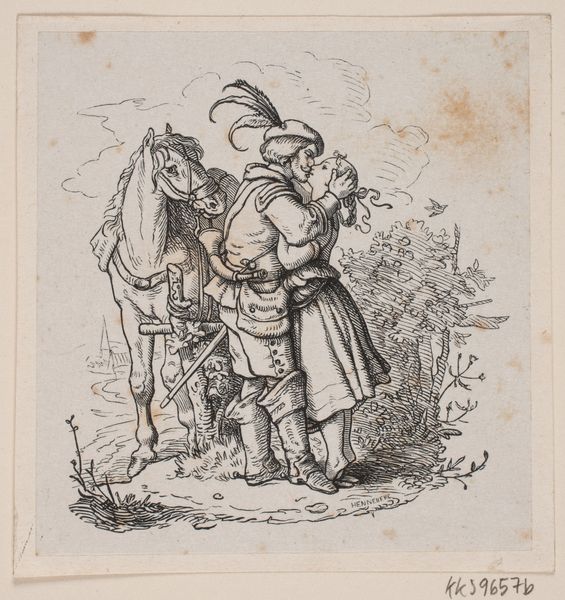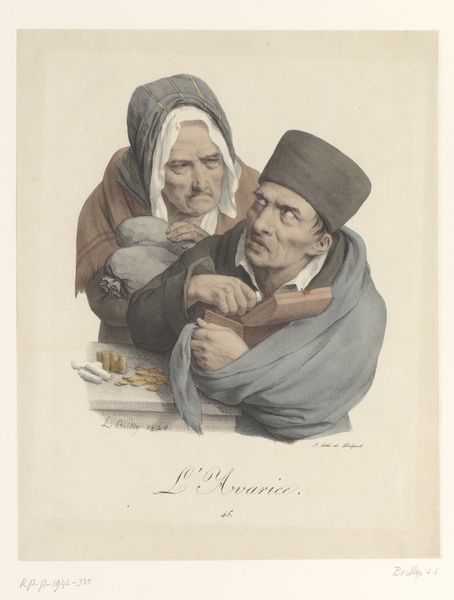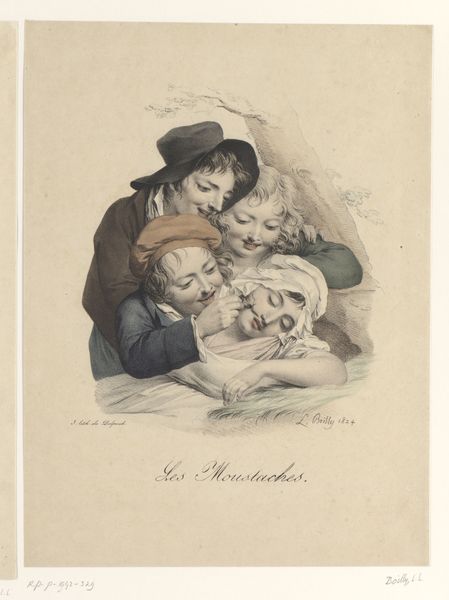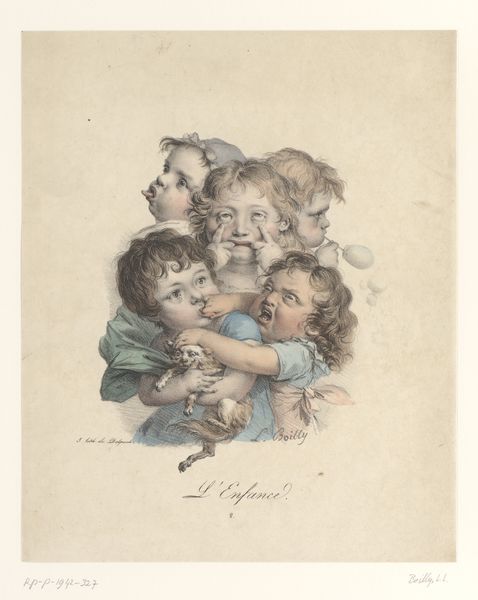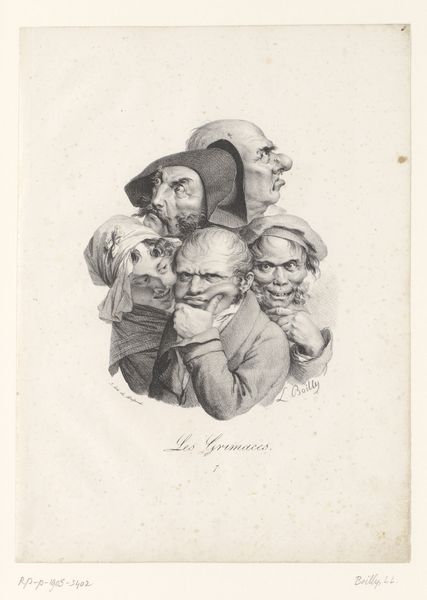
#
portrait
# print
#
caricature
#
caricature
#
figuration
#
genre-painting
Dimensions: height 110 mm, width 152 mm, height 113 mm, width 157 mm
Copyright: Rijks Museum: Open Domain
Curator: Right, let’s dive into this peculiar print titled "Les époux assortis," or "The Well-Matched Spouses" if you like. It was created in 1851 by Jean Alexis Achard. Editor: My goodness, that's… intense. I’m immediately drawn to the wife’s face; those teeth, displayed so prominently, practically jump off the page. The husband, meanwhile, is squinting at something in a glass. The title feels quite ironic, doesn't it? Curator: Irony, indeed. Achard was clearly making a commentary on social conventions of marriage, but more specifically, on appearances. Here, he uses caricature, exaggerating physical traits to critique their roles within the bourgeois family. She displays her teeth and the gentleman stares at the glass; both caught in self absorbed loops. Editor: Absolutely. And there's something almost theatrical about it—the wife positioned above and behind him feels like a puppeteer controlling his actions. One sees a wig lying nearby so it could also be about performativity itself: they have to fill a position more than "be" something. Curator: That’s a fascinating perspective, viewing it through a theatrical lens. The artist clearly exaggerates the physiognomy, reflecting popular pseudo-scientific theories of the 19th century, where physical appearance was thought to reveal character. So this emphasis might be poking fun at those supposed "matches." Editor: Exactly. The choice of lithography, the medium, also adds to that feeling of accessibility. It was a printmaking technique that allowed for wider distribution, turning the mockery of appearances and bourgeois family rituals into something more public. There is almost a carnivalesque subversion going on there, turning conventional portraiture inside out! Curator: The context of 19th century France cannot be overstated here. These images functioned almost as social satires, sparking debate around morality. One has to wonder to which extend they succeeded to challenge entrenched mindsets. Editor: Well, Achard's "well-matched spouses" do make you wonder, what makes a "good" couple? Are we looking at shared traits or societal expectations or something altogether…other? I think in the end this questions more than it dictates. Curator: In any case, "The Well-Matched Spouses" certainly offers plenty to unpack; much more than one may suspect when observing such an unusual picture for the first time!
Comments
No comments
Be the first to comment and join the conversation on the ultimate creative platform.
